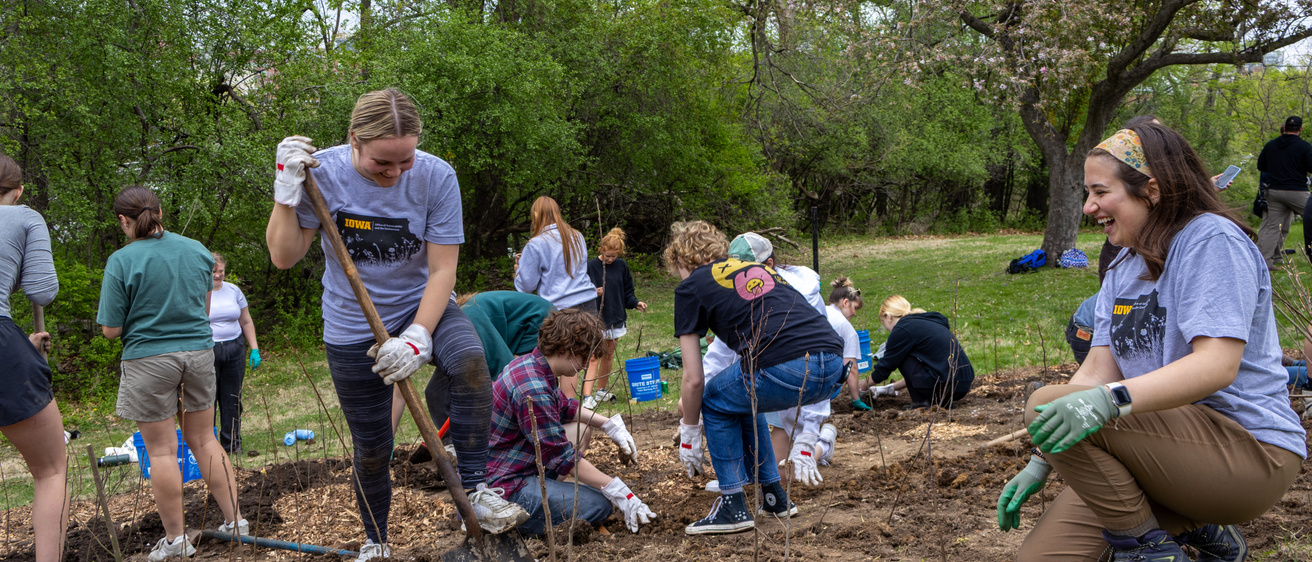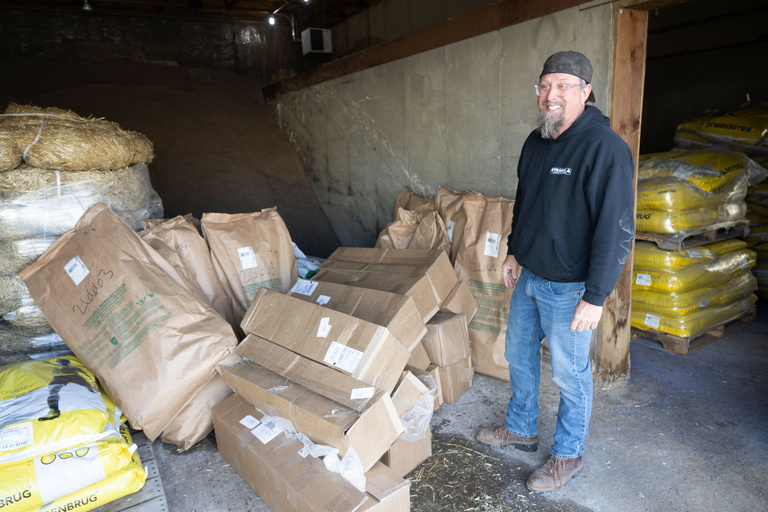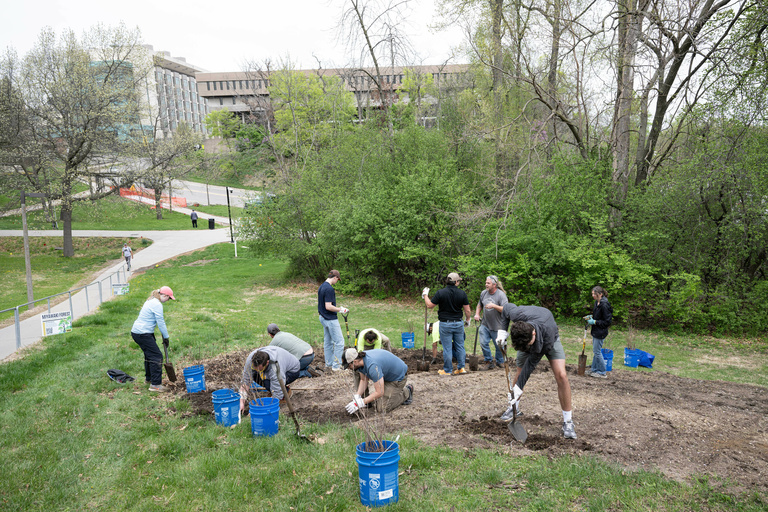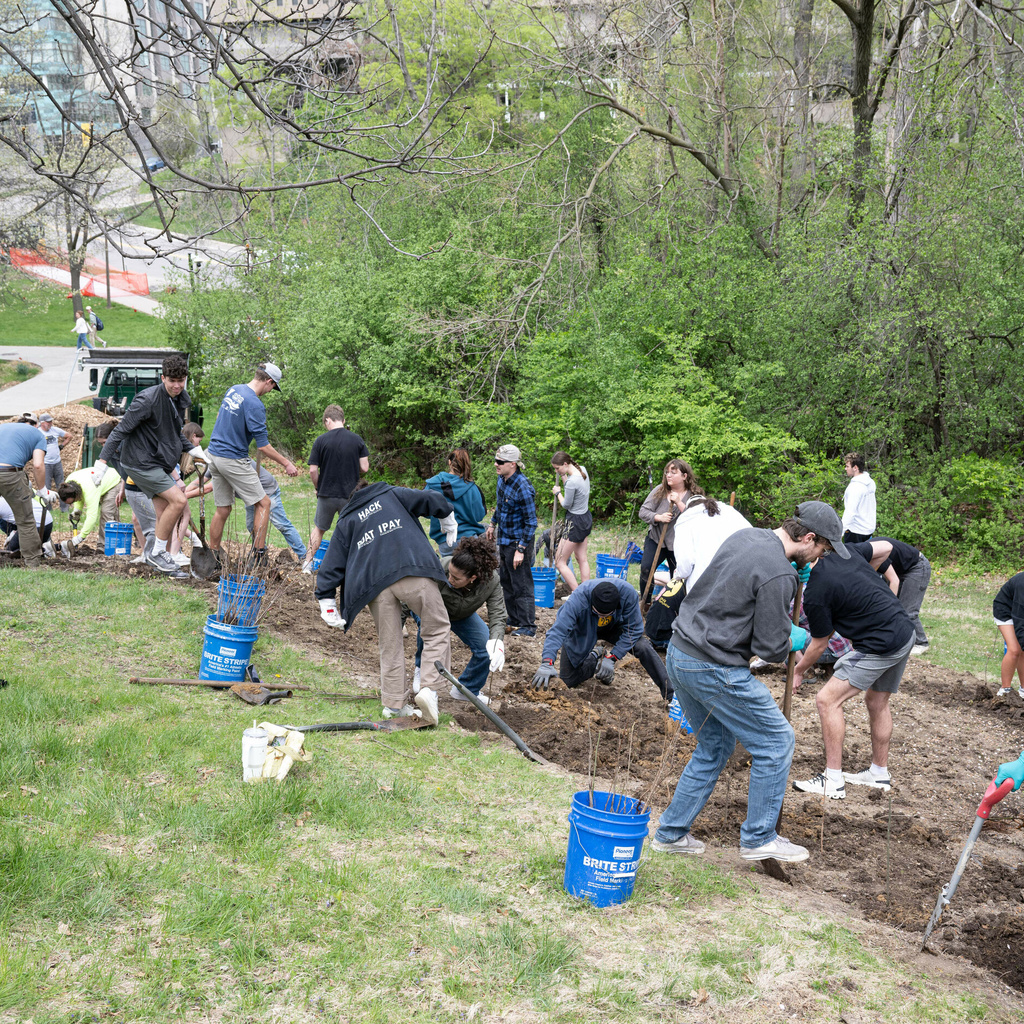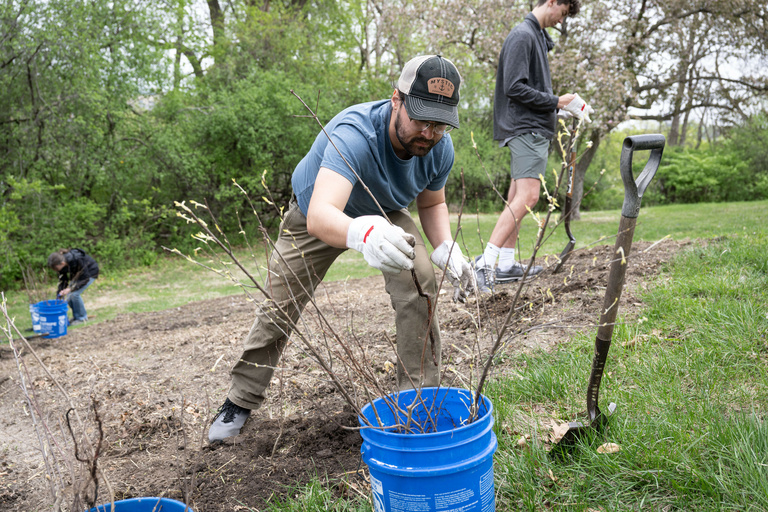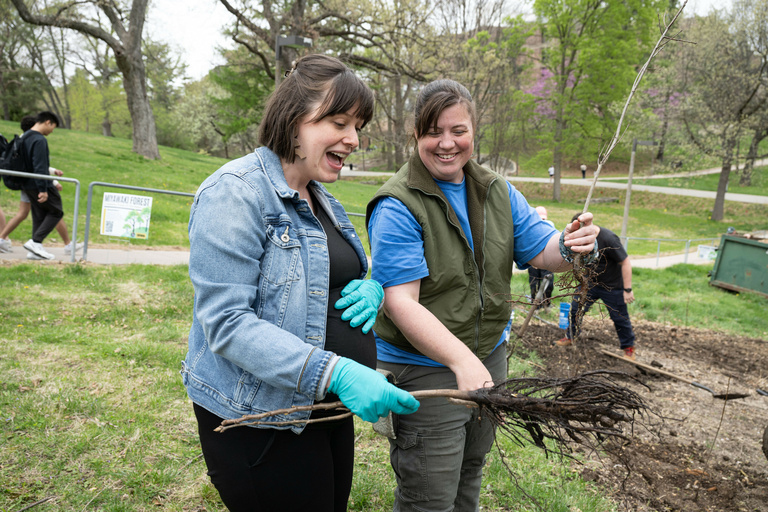Planting the Forest
What was a steep, grassy hill near the northeast corner of Hillcrest Residence Hall quickly became a forest of native trees, connecting Hawkeyes of the present and future. On Arbor Day (April 25) of 2025, the campus community planted 4,000 tree seedlings using the Miyawaki method. The Miyawaki method, developed by Japanese botanist Akira Miyawaki, is an innovative approach to afforestation that mimics natural forest ecosystems. This technique involves planting a diverse mix of native species very closely together, which accelerates growth and enhances biodiversity. Miyawaki forests grow up to 10 times faster than traditional forests and become self-sustaining within a few years. The University of Iowa’s Miyawaki forest is now the second and the largest planting of this style in the state.

A Campus-Wide Arboretum
The University of Iowa is home to about 8,000 trees of more than 300 species and is recognized as a Tree Campus by the Arbor Day Foundation.
Create a living laboratory
The Miyawaki forest offers faculty and students unique opportunities for interdisciplinary teaching and research, fostering hands-on learning and academic exploration.
Manage stormwater
Trees slow down and filter stormwater runoff, helping mitigate the university's impacts on the Iowa River.
Improve air quality
Dense forests act as natural air purifiers, absorbing pollutants and producing oxygen.
Address maintenance challenges
The hillside where the Miyawaki forest will be planted has been identified as dangerous to mow. Planting a Miyawaki forest here will transform this difficult-to-maintain area into a thriving ecosystem that requires minimal upkeep.
Enhance greenspace
The university prioritizes accessible outdoor spaces to enhance well-being and promote relaxation, recreation, and connection with nature. The Miyawaki forest will become an outdoor sanctuary for our campus community.
Enhance local biodiversity
Native species support local wildlife and create a balanced ecosystem.
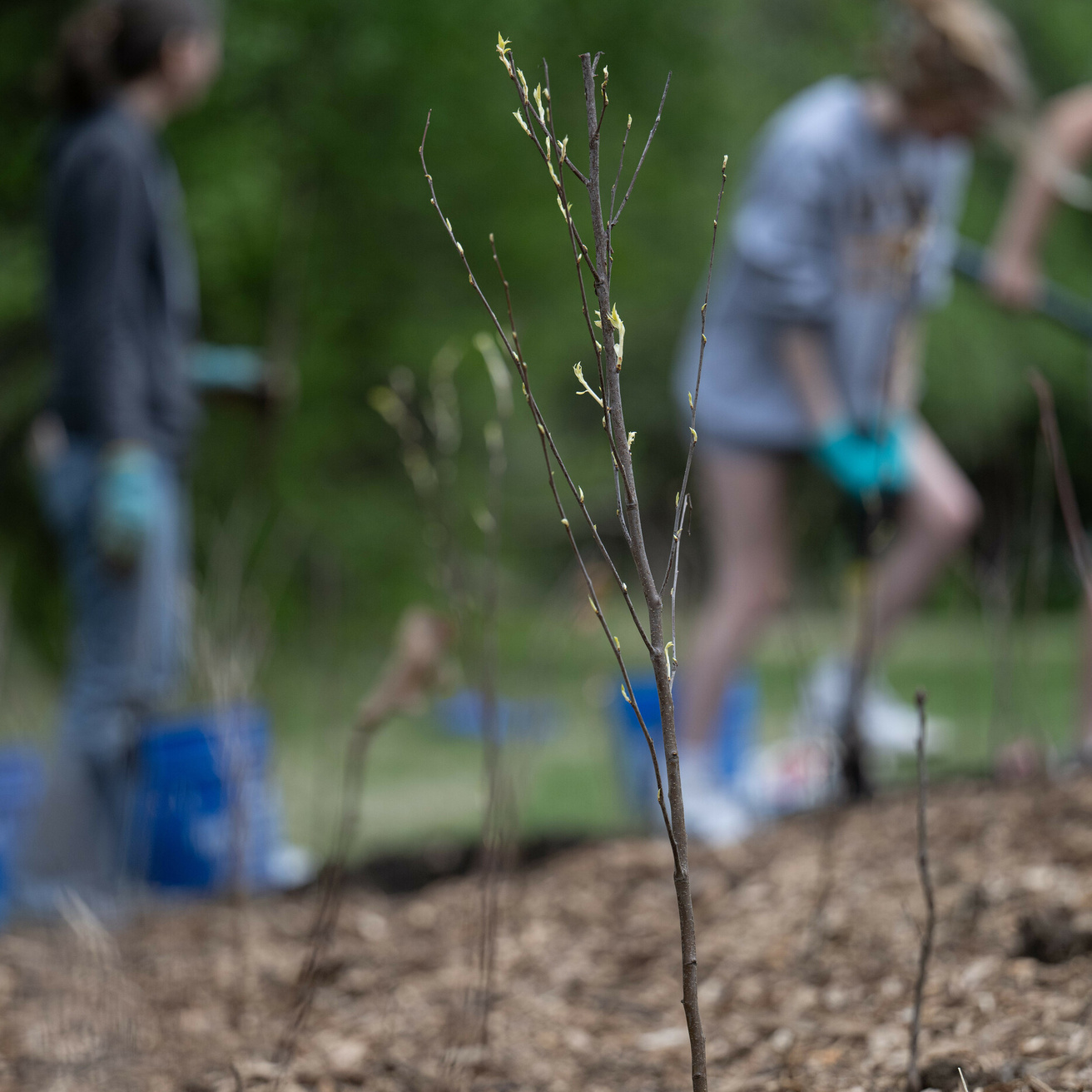
Trees in the UI Miyawaki Forest
All trees planted in the UI Miyawaki forest are native to Johnson County, IA. The trees are a diverse mix of canopy trees, understory trees, and shrubs, including:
Tree Species Planted
- Black oak, Quercus velutina
- Shagbark hickory, Carya ovata
- Pawpaw, Asimina triloba
- Black walnut, Juglans nigra
- Bitternut hickory, Carya cordiformis
- American hornbeam, Carpinus caroliniana
- Chinquapin oak, Quercus muehlenbergii
- Pignut hickory, Carya glabra
- Persimmon, Diospyros virginiana
- Kentucky coffeetree, Gymnocladus dioicus
- Ohio buckeye, Aesculus glabra
- Red oak, Quercus rubra
- White oak, Quercus alba
- Pecan, Carya illinoinensis
- Wahoo, Euonymus atropurpureus
- Hazelnut, Corylus americana
- Redbud, Cercis canadensis
- Blackhaw viburnum, Viburnum prunifolium
- Wild plum, Prunus americana
- Serviceberry, Amelanchier arborea
- Shellbark hickory, Carya Laciniosa
- Black cherry, Prunus serotina
- Smooth sumac, Rhus glabra
- Sugar maple, Acer saccharum
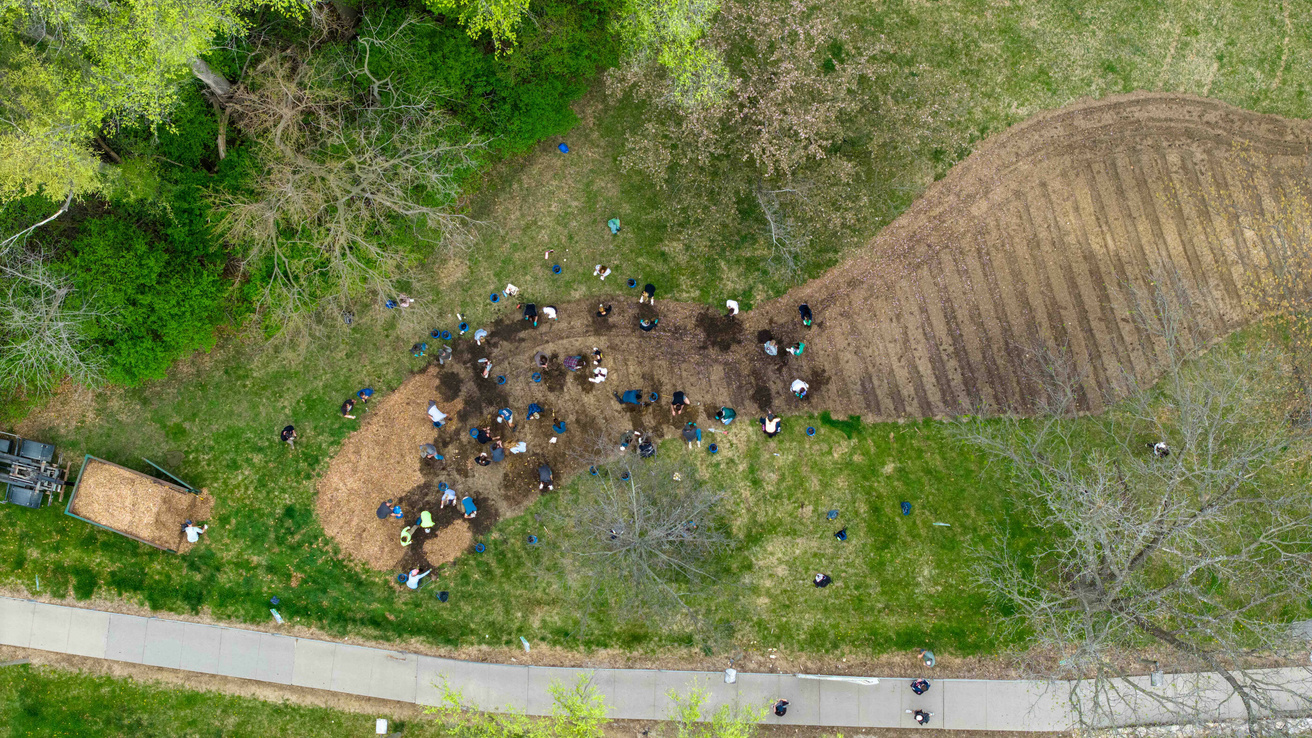
Miyawaki Forest News

